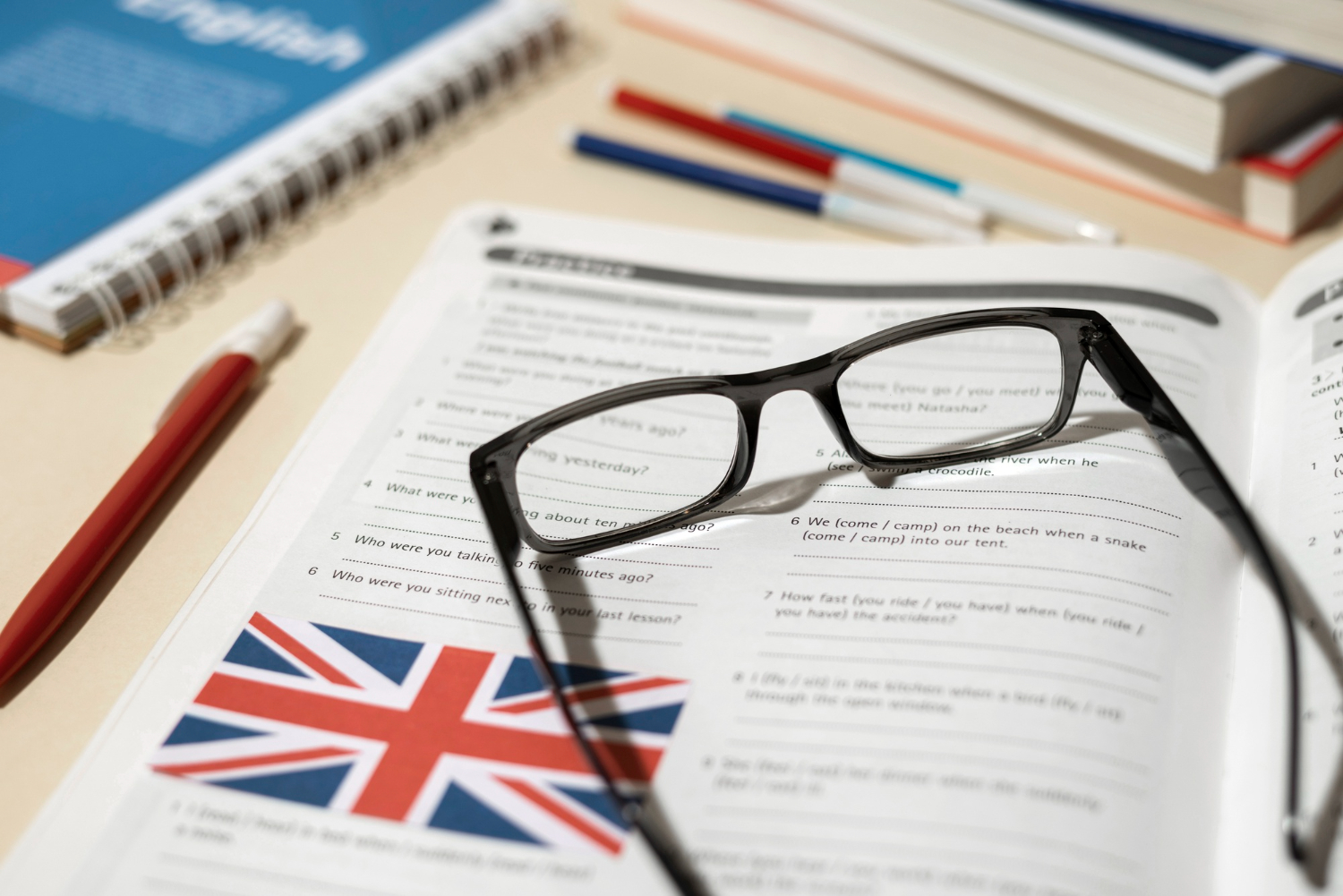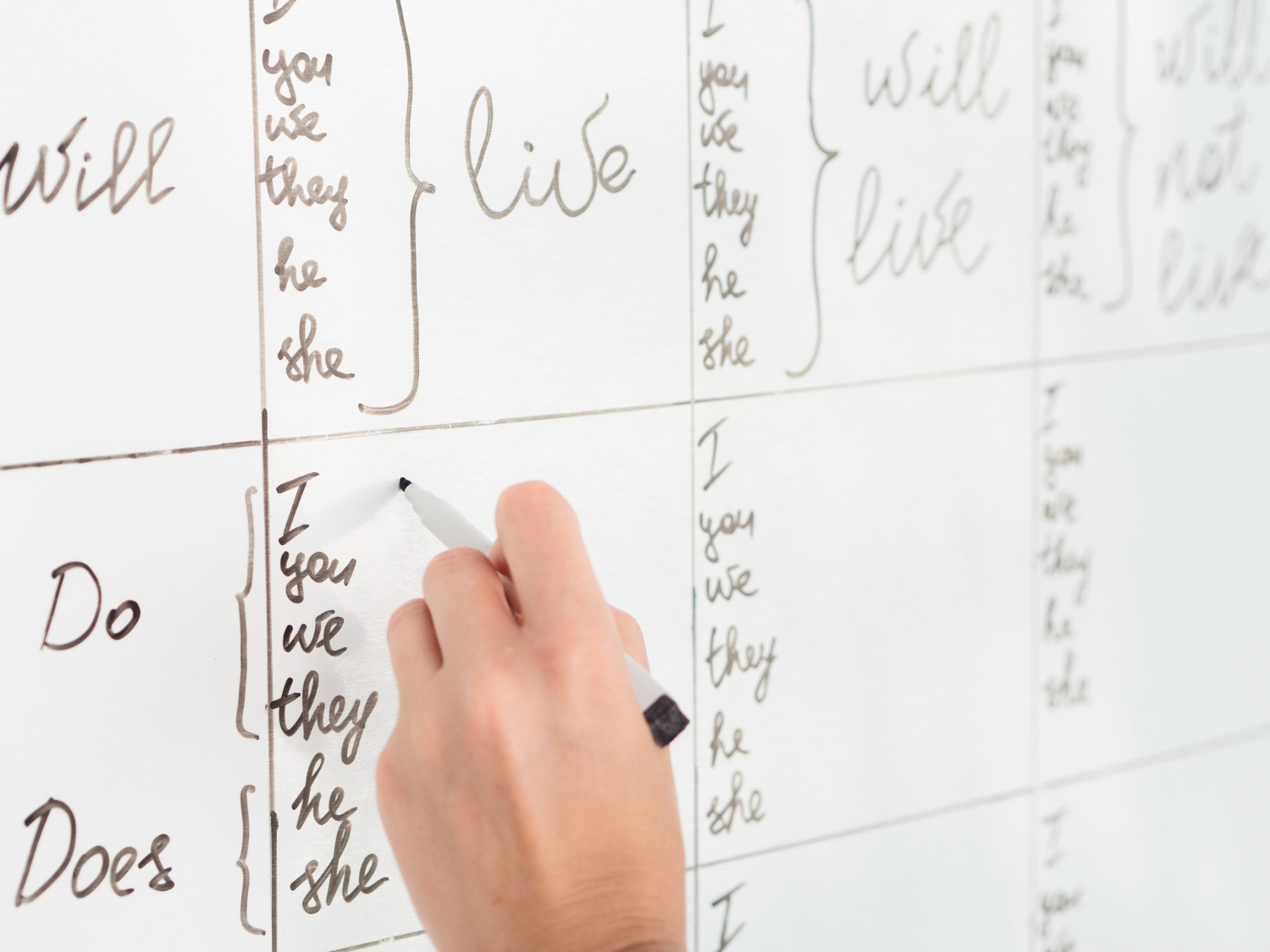Determining tense in English sentences
Oleksandra Kulish
Book expert
There are only three tenses in Ukrainian: past, present and future. In English, however, the system is much more complex. It is difficult to determine the exact number of tenses, as different linguists count them differently. However, classical grammar usually distinguishes 12 basic tenses of the English verb. Some researchers claim that, together with the nuances of forms, there can be as many as 32! That is why neglecting to study them means missing out on a large part of the material.

Why is it important to know English tenses?
Despite the fact that the English vocabulary is extremely large, the language is quite ‘economical’ with verbs. In Ukrainian, we use different word forms: for example, ‘читав” and ‘прочитав’. In English, different tenses are used instead of new forms. This approach reduces the number of word forms, but significantly increases the number of grammatical constructions that need to be mastered.
Some students wonder if it is possible to learn only a few tenses and still communicate freely in English. Unfortunately, no. In English, there are no ‘obsolete’ tenses that can be skipped. All of them are actively used in everyday speech and in texts. Therefore, you cannot do without knowledge of the complete system of tenses — this is the only way to learn to read, write and speak correctly.
It is worth noting that the topic of tenses is not the ‘final level’ of learning English. It is a gradual process: you add new forms from level to level. Don't be afraid of this topic — the rules are clearly structured and easy to learn logically. If it helps, remember that it is much more difficult for an English speaker who has decided to master the cases and conjugations in Ukrainian.
Features of the main tense groups: how to determine the tense in English
For convenience, let's look at the simple tenses of English together: rules of formation, cases of use, and examples. Let's start with the Simple group.
Present Simple
This is the basic tense that is learned at the beginning. It is used when we talk about:
- general facts;
- regular or habitual actions;
- future events, if they occur according to schedule.
Examples:
- Water freezes at zero degrees.
- She always drinks tea in the morning.
- The train leaves at 6 p.m.
- My brother works as a teacher.
- The Earth orbits the Sun.
In affirmative sentences in the 3rd person singular, -s/-es is added: He plays, she watches.
The verb to be has the forms: am, is, are and does not require auxiliary words in questions or negations.
Examples with to be:
- I am happy today.
- She is a doctor.
- Are they at home?
Do/does are used for questions and negations.
Past Simple
Used for actions that took place and were completed in the past.
Examples:
- We visited Rome last summer.
- He bought a new phone yesterday.
- They played chess all evening.
- I met him at the conference in 2019.
Regular verbs form the past tense with -ed (worked, played).
Irregular verbs have a special form (went, saw, wrote).
Examples with to be:
- I was tired after work.
- They were at the party.
- Was she your teacher?
The auxiliary did is used in questions and negatives.
Future Simple
Used for spontaneous decisions, promises, predictions.
Examples:
- I will send you the report tomorrow.
- Don’t worry, we will fix it.
- It will rain in the evening.
- She will call you back later.
Formed with will + verb.
Negation: will not / won’t.
Questions: Will + subject + verb?
Time markers:
Present Simple: always, usually, often, sometimes, never, every day, on Mondays.
Past Simple: yesterday, last week, two days ago, in 2010.
Future Simple: tomorrow, next week, soon, in the future.
Continuous tenses
If the name of the tense includes the word Continuous, it means that the action is ongoing, i.e. it is happening at a specific moment or over a period of time.
Present Continuous (present continuous tense)
This tense describes an action that is happening right now, continues for a certain period (for example, this week), or can refer to planned future events.
Examples:
- She is reading a new book at the moment.
- We are working on an important project this month.
- I am meeting my friends tomorrow evening.
Formula: am / is / are + verb-ing.
Past Continuous (past continuous tense)
Used to describe an action that lasted at a specific moment in the past, parallel actions in the past, or a situation that was interrupted by another action.
Examples:
- I was cooking dinner when the phone rang.
- They were watching TV at 9 p.m. yesterday.
- She was sleeping when I came home.
Formula: was / were + verb-ing.
Future Continuous (future continuous tense)
Used to talk about an action that will be happening at a specific moment in the future, long-term plans or arrangements:
- Tomorrow at this time I will be travelling to London.
- She will be preparing for her presentation all morning.
- We will be staying at a hotel near the beach.
Formula: will be + verb-ing
Marker words for Continuous:
Present Continuous: now, at the moment, currently, these days, this week.
Past Continuous: yesterday at (time), while, when, all day yesterday.
Future Continuous: tomorrow at (time), this time next week, soon, in a while.

Perfect tenses in English
The Perfect aspect shows that the action is complete (or its result is important at a certain point in time). It is formed using the auxiliary verb to have in the appropriate tense and the verb in the 3rd form (Past Participle).
Present Perfect
Used when an action began in the past and continues to the present, we are talking about experience, an important result, rather than the specific time of the event.
Formula: have / has + V3
Examples:
- She has already finished her homework.
- We have lived in this city for ten years.
- I have never tried Japanese food.
Formula: have / has + V3
Past Perfect (past perfect tense)
Used when one action took place before another in the past.
Examples:
- She had already gone to bed when I called.
- We had finished dinner before our guests arrived.
- He hadn’t seen that film before yesterday.
Formula: had + V3.
Future Perfect (future perfect tense)
Used when an action will be completed by a certain point in the future.
Examples:
- I will have written the report by tomorrow morning.
- They will have graduated by next summer.
- We will have completed the task before the deadline.
Formula: will have + V3
Perfect Continuous (perfect continuous tenses)
Present Perfect Continuous is formed using the formula: have / has been + V-ing
Examples:
- I have been studying English for three years.
- She has been working since early morning.
- They have been waiting for the bus for half an hour.
Past Perfect Continuous is formed using the formula had been + V-ing.
Examples:
- She had been reading for two hours before she fell asleep.
- We had been driving for hours when we finally reached the city.
- He had been waiting for her all day.
Formula for Future Perfect Continuous: will have been + V-ing
Examples:
By next month I will have been working here for five years.
- She will have been studying all day by the time you come.
- We will have been travelling for 12 hours when we arrive.
These forms emphasise that the action lasted for a certain period of time and ended or is still continuing at a certain point in time.
Marker words for Perfect:
Present Perfect: already, just, ever, never, yet, recently, for, since.
Past Perfect: before, after, by the time, already.
Future Perfect: by (tomorrow, next week), before, by the time.
Perfect Continuous: for, since, how long.
Tips for quick recognition: how to easily determine time in English
Learning to determine time in English is not as difficult as it may seem at first glance. The above-mentioned marker words are the best help in this. For example, the simple past tense is easy to recognise by a reference to a specific date or moment in the past.
If the verb has the ending -ing, it means that the action was not a one-time event, but lasted for a certain period of time.
It is important to remember that if a sentence begins with a verb in the past tense, then the second part of the sentence must also use the past tense in order to maintain grammatical consistency.
However, the best way to master English tenses is through practice. Watch as many films and TV series in English as possible, read books, and gradually you will begin to feel the tenses intuitively. Eventually, you will no longer have to think about which verb to use in a sentence — it will all come to you automatically. Good luck!






